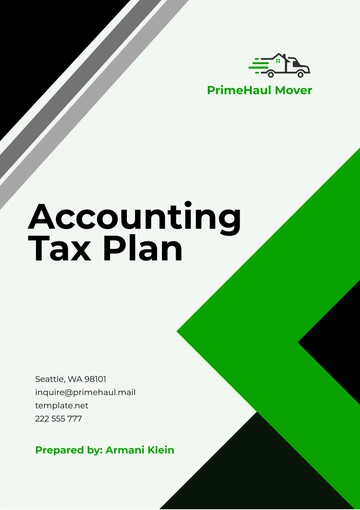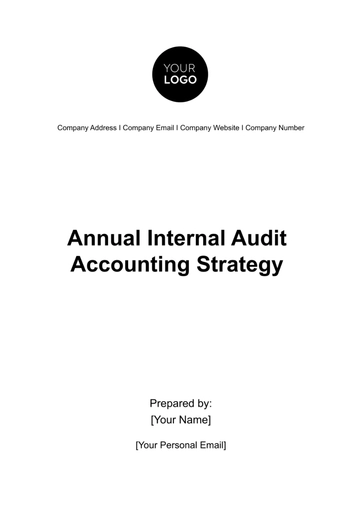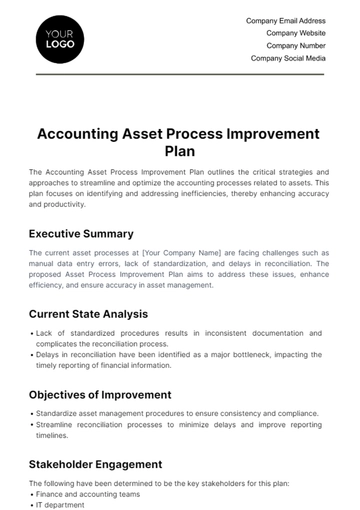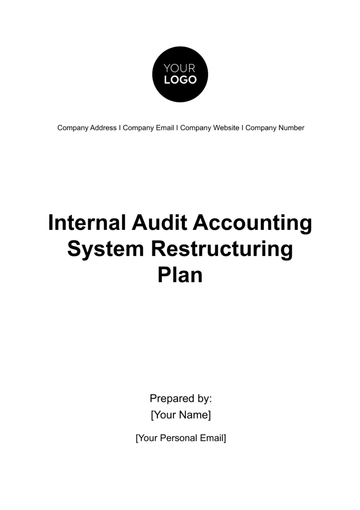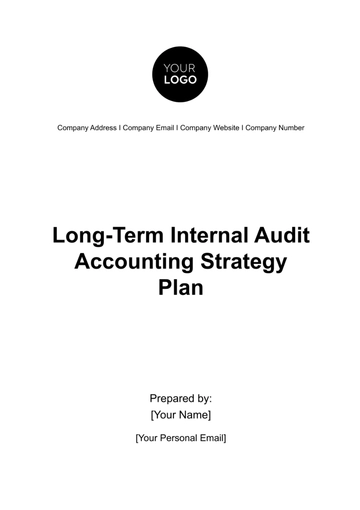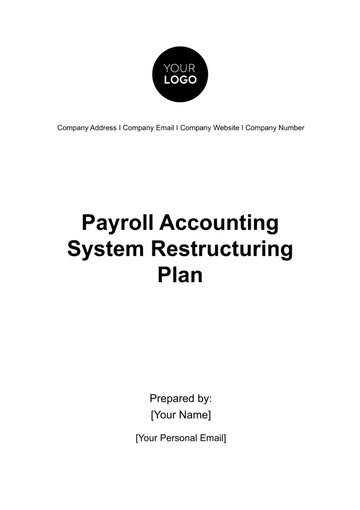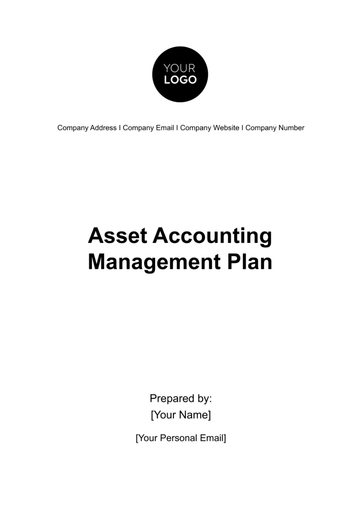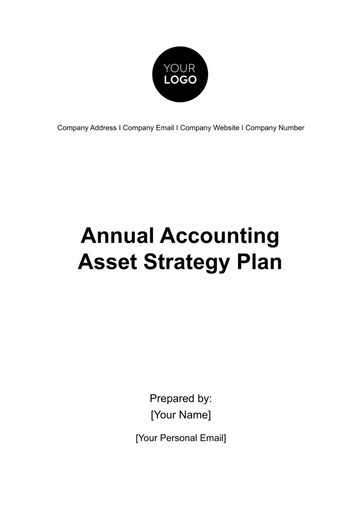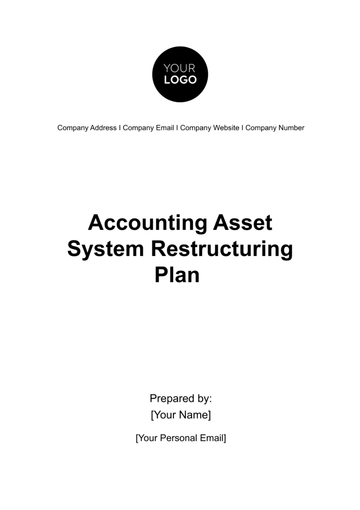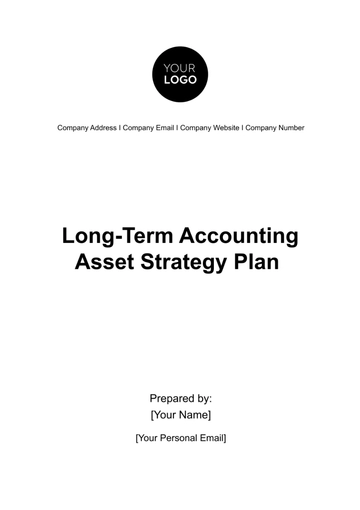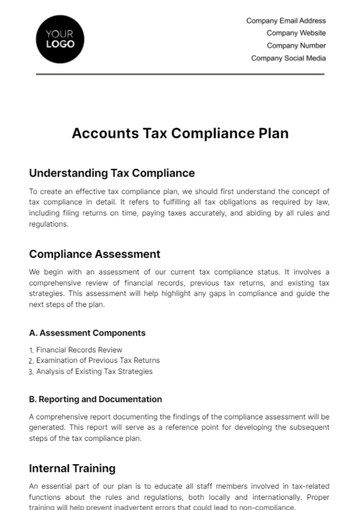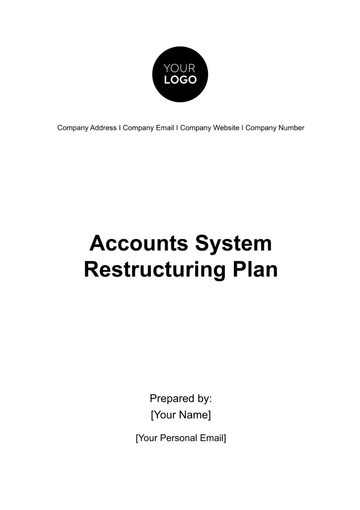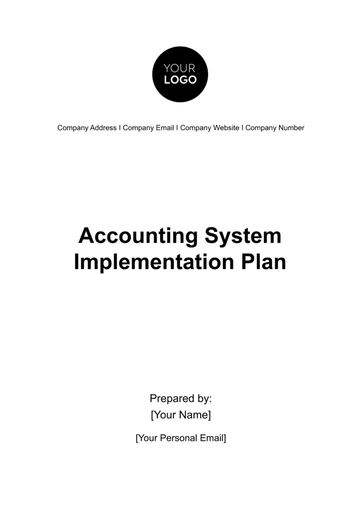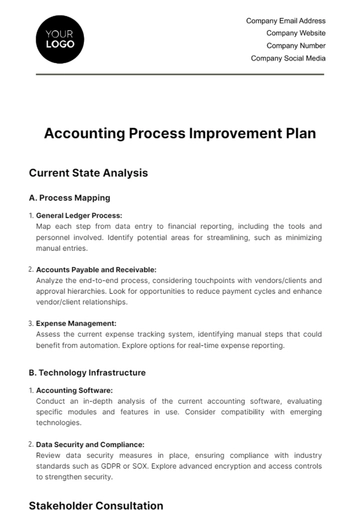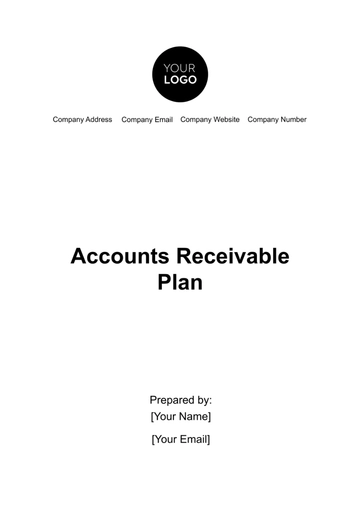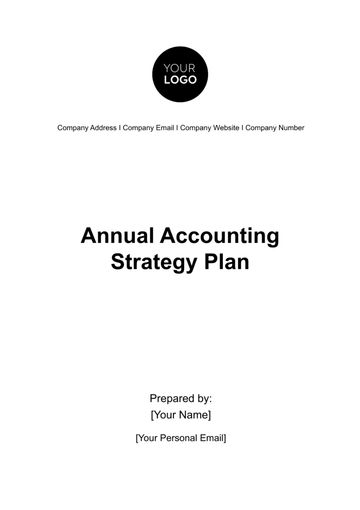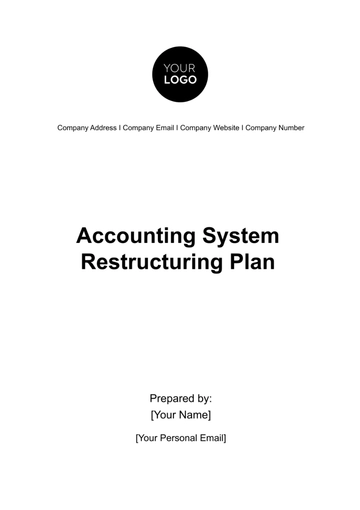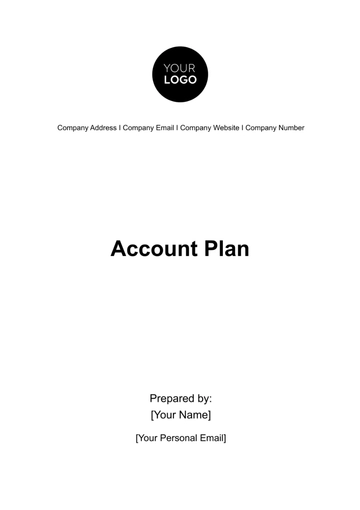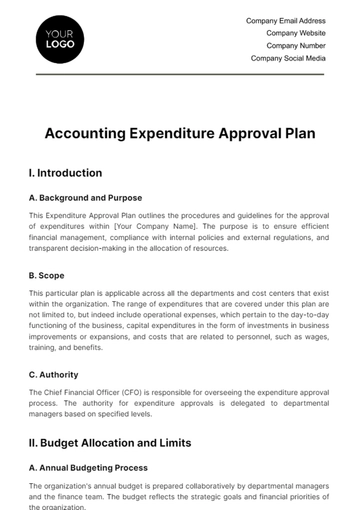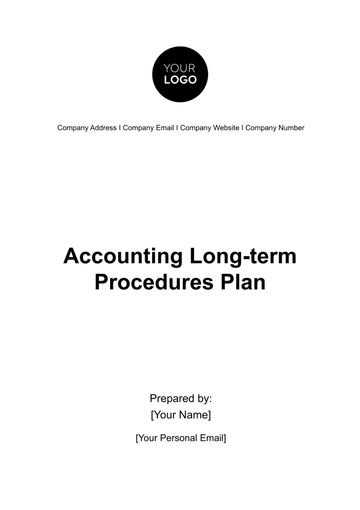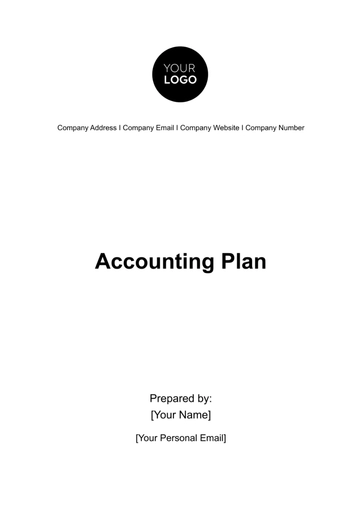Free Accounting Plan
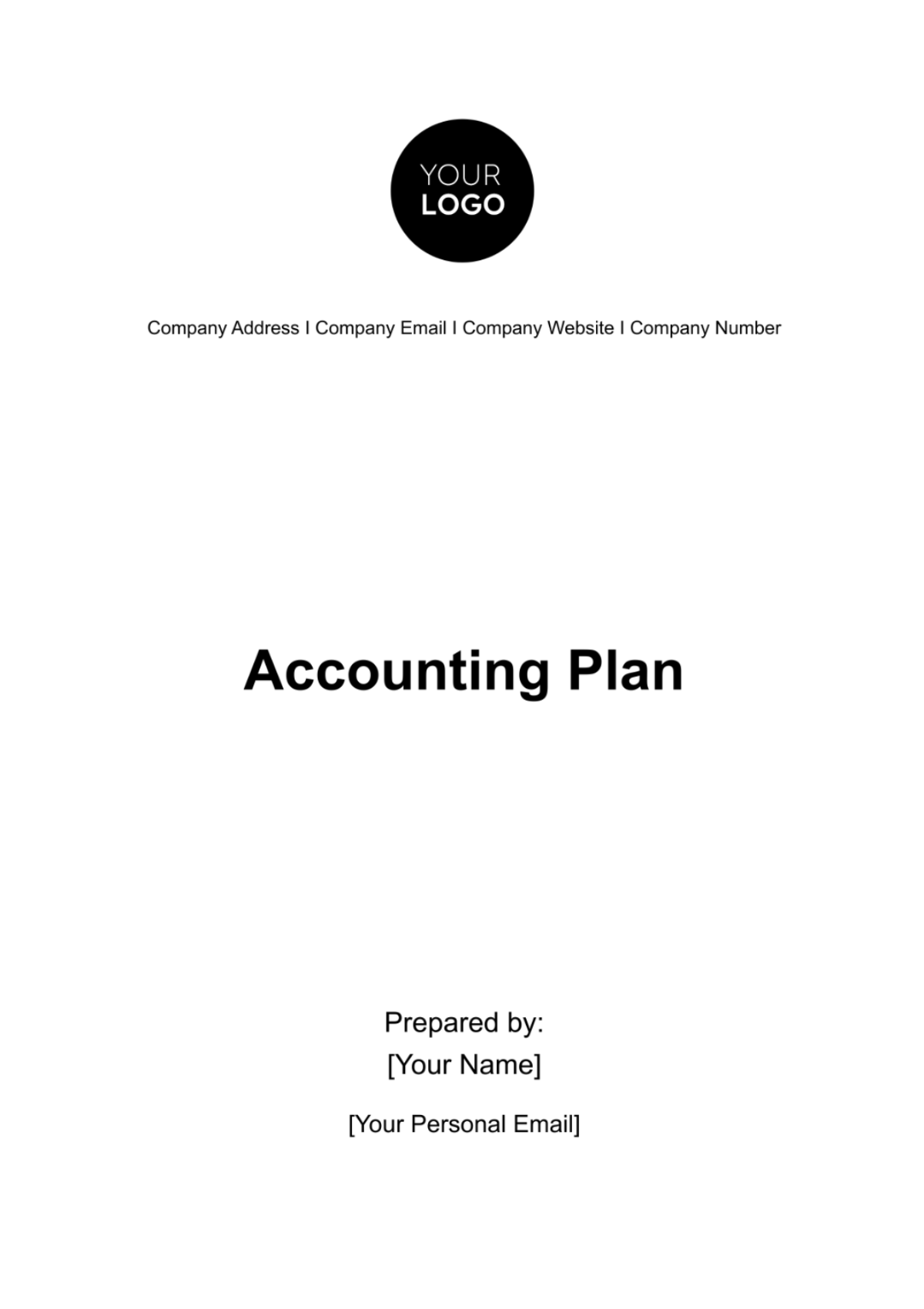
Introduction
Our comprehensive accounting plan is designed to navigate the challenges with precision and foresight. It lays the groundwork for financial excellence by integrating innovative accounting practices with our organizational vision. This plan addresses the immediate needs of accurate financial reporting and compliance prepares us for sustainable growth. By aligning our financial objectives with our broader organizational goals, we aim to create a synergistic effect that enhances overall performance and stability.
Setting Objectives
The initial phase of our refined accounting plan centers on delineating our primary objectives. This crucial step entails the articulation of specific, measurable financial targets, intricately interwoven with the overarching strategic objectives of our organization. To achieve a holistic approach, it is imperative that these objectives encompass a comprehensive spectrum of our accounting responsibilities. This includes, but is not limited to, tax optimization strategies, rigorous auditing processes, detailed budgeting frameworks, and the precise execution of financial reporting.
Furthermore, it is essential to integrate these financial goals with a keen understanding of regulatory compliance and risk management, ensuring that our accounting practices not only support but also enhance the organizational strategy. By doing so, we establish a robust foundation for fiscal stability and growth, propelling our organization towards its long-term vision.
Staff Development and Training
The field of accounting is characterized by its technical nature and the continuous evolution of practices and standards. In recognition of this, our enhanced staff development and training plan is designed to ensure that our team remains at the forefront of the profession. This plan emphasizes the following key aspects:
Ongoing Professional Education:
We prioritize regular and structured training sessions to keep our staff updated with the latest accounting tools, practices, and standards. This education is not limited to new software or procedural updates; it includes an in-depth understanding of global accounting standards and regulatory requirements.
Focused Skill Enhancement:
Our training program is tailored to address both the foundational and advanced aspects of accounting. This includes sessions on emerging technologies in accounting, changes in tax laws, financial analysis, and risk management.
Compliance and Ethical Standards:
A significant part of our training focuses on ensuring that our staff is well-versed in the latest compliance regulations and adheres to the highest ethical standards in accounting.
Performance Monitoring and Feedback:
We implement a system to regularly assess the impact of our training programs on staff performance, allowing for timely adjustments and continuous improvement.
Through this structured approach to staff development and training, we aim to uphold and enhance the technical proficiency of our accounting team, ensuring that they are not only competent in their current roles but are also prepared for future challenges and advancements in the field.
Technology Implementation
The integration of advanced technology and sophisticated software systems is not merely an option but a necessity. To elevate our accounting function to the pinnacle of efficiency and accuracy, our technology implementation strategy encompasses a comprehensive range of tools and platforms. This strategy is designed to optimize every facet of our accounting operations, from fundamental tasks to intricate financial analyses. Key elements include:
Automation of Routine Tasks: Leveraging technology to automate basic accounting processes, such as bookkeeping, transaction recording, and invoice management. This not only increases efficiency but also minimizes the likelihood of human error.
Advanced Financial Reporting: Utilizing sophisticated software to generate complex financial reports. These tools enable real-time data analysis, offering deeper insights and aiding in strategic decision-making.
Cloud-Based Systems: Implementing cloud-based accounting solutions to ensure accessibility, scalability, and security. This facilitates remote access to financial data, fosters collaboration, and supports business continuity.
Data Analytics and Business Intelligence: Integrating data analytics and business intelligence tools to transform raw financial data into actionable insights. This approach aids in identifying trends, forecasting future financial scenarios, and optimizing financial performance.
Compliance and Security: Prioritizing compliance and security in our technology solutions to safeguard sensitive financial information and ensure adherence to regulatory standards.
Continuous Training and Support: Providing ongoing training and support to our staff to ensure they are adept at using these technologies, thereby maximizing the potential benefits of these systems.
Implementation Timeline:
Aspect | Implementation Date |
|---|---|
Automation of Routine Tasks | June 10, 2050 |
By systematically implementing these technological advancements, we aim to revolutionize our accounting operations, enhancing not only the efficiency and accuracy of our financial processes but also empowering our team to focus on more strategic, value-adding activities.
Risk Management Strategies
Our comprehensive risk management strategies are tailored to anticipate and mitigate potential risks arising from various sources. This approach is not limited to reactive measures; it also encompasses a strategic foresight that allows us to navigate through uncertainties effectively. Key elements of our risk management strategies include:
Identification and Analysis of Risks: Our first step is the systematic identification of potential risks, which may arise from changes in tax laws, economic fluctuations, market volatility, or other external factors. This is followed by a thorough analysis to understand the impact and likelihood of these risks.
Development of Contingency Plans: Based on the risk assessment, we develop robust contingency plans. These plans are designed to be flexible and responsive, allowing us to swiftly adapt to changing circumstances and mitigate potential impacts on our financial operations.
Regular Monitoring and Review: We establish mechanisms for ongoing monitoring of the risk landscape. This includes staying abreast of regulatory changes, economic trends, and market dynamics. Regular reviews ensure that our risk management strategies remain relevant and effective.
Integration with Organizational Objectives: Risk management is integrated with our broader organizational goals. By aligning risk strategies with business objectives, we ensure a cohesive approach that supports overall organizational resilience.
Staff Training and Awareness: We emphasize the importance of risk awareness among our staff. Regular training sessions are conducted to ensure that all team members are equipped to identify and respond to potential risks effectively.
Leveraging Technology for Risk Management: We utilize advanced technologies and software to enhance our risk assessment and management processes. These tools aid in predictive analysis, scenario planning, and real-time monitoring, providing us with a strategic edge in risk management.
By embedding these comprehensive risk management strategies into our accounting plan, we aim to safeguard our financial operations from unforeseen challenges, ensuring stability and continuity in our financial management practices.
Compliance and Regulatory Standards
Steadfast compliance is not just a necessity but a cornerstone of our accounting integrity. Our approach to maintaining compliance involves a multi-faceted strategy:
Continuous Monitoring of Regulatory Changes:
We commit to an ongoing vigilance in monitoring changes in regulatory standards. This includes staying updated with local, national, and international financial regulations that could impact our accounting practices.
Alignment of Accounting Practices:
As regulatory standards evolve, we proactively align our accounting methods and processes with these updates. This alignment is crucial to ensure that all financial reporting is accurate and compliant.
Regular Compliance Audits:
We implement a schedule of regular internal audits specifically focused on compliance. These audits are designed to rigorously assess and confirm adherence to all relevant regulations and standards.
Staff Training on Regulatory Standards:
Regular training sessions are conducted to ensure that our accounting team is well-versed in current and upcoming regulatory requirements. This ongoing education is key to maintaining a culture of compliance.
Streamlining Processes
Efficiency in accounting is pivotal to the overall productivity and strategic focus of the organization. Our plan to streamline accounting processes encompasses:
Process Refinement: We undertake a thorough review of our current accounting processes to identify and eliminate any redundancies. This involves re-evaluating existing workflows and procedures to enhance efficiency.
Automation of Accounting Tasks: Where feasible, we aim to automate repetitive and time-consuming tasks. Utilizing advanced accounting software and technologies, we can reduce manual labor, minimize errors, and increase processing speed.
Resource Optimization: By streamlining processes and implementing automation, we free up valuable resources. This allows our accounting team to redirect their focus towards more strategic tasks and analysis, adding greater value to the organization.
Continuous Improvement: Our approach is not static; we continually seek opportunities for improvement in our processes. By embracing innovations and best practices, we ensure our accounting operations remain efficient and effective in the face of changing business environments.
Proactive Tax Planning
Our approach to proactive tax planning is designed to optimize tax efficiency through strategic foresight and detailed understanding of tax legislation. This enhanced strategy encompasses several key elements:
In-depth Understanding of Tax Laws: We prioritize a comprehensive and up-to-date knowledge of current tax laws and regulations. This involves not only familiarizing ourselves with existing tax codes but also staying abreast of any legislative changes or updates.
Strategic Tax Implication Analysis: Each decision made by the company is analyzed for its tax implications. We proactively evaluate how business decisions, from investments to operational changes, will affect our tax position. This analysis is crucial in ensuring that all decisions are made with a clear understanding of their tax impact.
Regular Exploration of Tax Saving Opportunities: Our team routinely explores avenues for tax savings. This includes scrutinizing deductions, credits, incentives, and other tax relief measures available to the company. We actively seek opportunities that align with our business activities and financial strategies.
Advanced Planning for Future Tax Scenarios: We engage in forward-looking tax planning, anticipating future tax environments and preparing accordingly. This includes scenario planning for different tax landscapes and creating strategies that can adapt to these potential changes.
Collaboration with Tax Professionals: To ensure the highest level of expertise and insight, we collaborate with external tax professionals. This partnership provides access to specialized knowledge and helps in navigating complex tax situations.
Regular Review and Adjustment of Tax Strategies: Recognizing that tax environments are dynamic, we commit to regular reviews and adjustments of our tax strategies. This ensures that our approach remains relevant and effective in light of new information and changing circumstances.
By implementing these comprehensive proactive tax planning measures, we aim to manage our tax obligations efficiently, minimize liabilities, and contribute positively to the company's overall financial health.
Communication Plan
Our refined communication plan is strategically designed to facilitate an efficient and transparent flow of financial information within the organization. This plan is built on the foundation of clear protocols and regular interactions, ensuring that all stakeholders are well-informed and aligned. Key components of our enhanced communication strategy include:
Establishment of Clear Communication Protocols: We will develop and implement clear guidelines and protocols for financial communication. This includes defining the channels, formats, and timelines for disseminating financial information, ensuring consistency and clarity in all communications.
Scheduled Financial Meetings: Regularly scheduled meetings will be held to discuss financial matters. These meetings will serve as a platform for presenting financial updates, discussing fiscal strategies, and addressing any concerns or queries. The frequency of these meetings will be determined based on the needs of the organization and the dynamic nature of our financial operations.
Comprehensive Financial Reporting: We will produce detailed financial reports at regular intervals. These reports will not only cover the financial performance and position of the organization but also provide insights into trends, forecasts, and potential financial risks.
Real-Time Updates and Alerts: In addition to regular reports, we will implement a system for real-time updates and alerts. This will ensure that critical financial information is promptly communicated, enabling swift decision-making and response to emerging situations.
Open Channels for Feedback and Discussion: Creating an environment where feedback and open discussions about financial matters are encouraged. This includes setting up channels where employees can ask questions, provide input, and express concerns regarding financial issues.
Training and Support for Effective Communication: Providing training and resources to staff members, especially those involved in financial reporting and communication, to enhance their skills in effective and clear communication.
Utilizing Technology for Enhanced Communication: Leveraging technology such as financial dashboards, intranet portals, and collaboration tools to streamline the communication process, making it more accessible and efficient.
By implementing these strategies, we aim to establish a robust communication framework that ensures all members of the organization are informed and engaged in the financial health and strategies of the company. This approach not only promotes transparency and accountability but also fosters a culture of financial awareness and collaboration.
Regular Auditing
Audits are fundamental in validating the efficacy of our accounting systems and ensuring the veracity of our financial reporting. To strengthen this aspect of our financial governance, we have developed an enhanced regular auditing framework, encompassing the following elements:
Scheduled Periodic Audits: We will establish a systematic schedule for conducting audits at regular intervals throughout the year. These audits will be strategically timed to provide continuous oversight and assessment of our accounting processes and controls.
Comprehensive Scope of Audits: Each audit will comprehensively examine various aspects of our financial operations. This includes a thorough review of accounting procedures, verification of financial records, and evaluation of compliance with relevant accounting standards and regulations.
Use of Advanced Auditing Techniques: We will employ advanced auditing methodologies and tools. This includes data analytics and forensic accounting techniques to identify anomalies, discrepancies, and areas of potential improvement.
External and Internal Audit Integration: Our auditing framework will include both external and internal audits. External audits provide an independent assessment of our financial statements, while internal audits offer continuous monitoring and prompt identification of issues.
Audit Report and Feedback Mechanism: Post-audit, a detailed report will be prepared, highlighting findings, areas of concern, and recommendations for improvements. We will establish a feedback mechanism to ensure that these recommendations are discussed, addressed, and implemented effectively.
Training and Awareness for Audit Preparedness: Regular training sessions will be conducted to ensure that all staff members are aware of audit processes and understand their roles and responsibilities. This will foster a culture of audit preparedness and accountability across the organization.
By implementing this enhanced regular auditing framework, we aim to uphold the highest standards of financial integrity and transparency, ensuring that our organization's financial status is accurately represented and effectively managed.
Review and Adjust
The culmination of our accounting plan lies in an optimized process of periodic review and adjustment, a critical step to ensure the plan's ongoing relevance and effectiveness. This process is meticulously structured to maintain alignment with our organizational objectives and adapt to evolving circumstances. Key components of this optimized process include:
Regular Performance Evaluations: We will conduct systematic evaluations of our accounting performance against the established objectives. These evaluations will be scheduled at regular intervals to provide timely insights into our progress and efficiency.
Gap Analysis and Identification: During these evaluations, we will perform a comprehensive gap analysis. This involves identifying areas where our performance deviates from the set objectives, pinpointing both underperformance and areas of unexploited potential.
Adaptive Plan Adjustments: Based on the findings from our evaluations, we will proactively adjust our accounting plan. This includes refining strategies, revising objectives, and implementing new processes or technologies as needed to address identified gaps and challenges.
Responsive to Changing Environments: Our review and adjustment process is designed to be dynamic, allowing us to respond swiftly to external changes such as shifts in economic conditions, regulatory updates, or technological advancements.
Stakeholder Engagement and Feedback: We will involve key stakeholders in the review process, gathering feedback to ensure a holistic view of our performance and the effectiveness of our plan.
Documentation and Communication of Adjustments: All adjustments and updates to the plan will be thoroughly documented and communicated across the organization. This ensures transparency and keeps all team members informed and aligned with the revised strategies.
Through this optimized review and adjustment process, we aim to ensure that our accounting plan not only meets but exceeds our organizational goals, adapting seamlessly to the ever-changing business landscape.
- 100% Customizable, free editor
- Access 1 Million+ Templates, photo’s & graphics
- Download or share as a template
- Click and replace photos, graphics, text, backgrounds
- Resize, crop, AI write & more
- Access advanced editor
Discover simplified accounting with Template.net's Accounting Plan Template. This editable and customizable tool allows hassle-free data entry, created accessibly in our Ai Editor Tool. Uniquely designed for your convenience, creating a professional-looking accounting plan has never been easier. Download a copy of our template today!
You may also like
- Finance Plan
- Construction Plan
- Sales Plan
- Development Plan
- Career Plan
- Budget Plan
- HR Plan
- Education Plan
- Transition Plan
- Work Plan
- Training Plan
- Communication Plan
- Operation Plan
- Health And Safety Plan
- Strategy Plan
- Professional Development Plan
- Advertising Plan
- Risk Management Plan
- Restaurant Plan
- School Plan
- Nursing Home Patient Care Plan
- Nursing Care Plan
- Plan Event
- Startup Plan
- Social Media Plan
- Staffing Plan
- Annual Plan
- Content Plan
- Payment Plan
- Implementation Plan
- Hotel Plan
- Workout Plan
- Accounting Plan
- Campaign Plan
- Essay Plan
- 30 60 90 Day Plan
- Research Plan
- Recruitment Plan
- 90 Day Plan
- Quarterly Plan
- Emergency Plan
- 5 Year Plan
- Gym Plan
- Personal Plan
- IT and Software Plan
- Treatment Plan
- Real Estate Plan
- Law Firm Plan
- Healthcare Plan
- Improvement Plan
- Media Plan
- 5 Year Business Plan
- Learning Plan
- Marketing Campaign Plan
- Travel Agency Plan
- Cleaning Services Plan
- Interior Design Plan
- Performance Plan
- PR Plan
- Birth Plan
- Life Plan
- SEO Plan
- Disaster Recovery Plan
- Continuity Plan
- Launch Plan
- Legal Plan
- Behavior Plan
- Performance Improvement Plan
- Salon Plan
- Security Plan
- Security Management Plan
- Employee Development Plan
- Quality Plan
- Service Improvement Plan
- Growth Plan
- Incident Response Plan
- Basketball Plan
- Emergency Action Plan
- Product Launch Plan
- Spa Plan
- Employee Training Plan
- Data Analysis Plan
- Employee Action Plan
- Territory Plan
- Audit Plan
- Classroom Plan
- Activity Plan
- Parenting Plan
- Care Plan
- Project Execution Plan
- Exercise Plan
- Internship Plan
- Software Development Plan
- Continuous Improvement Plan
- Leave Plan
- 90 Day Sales Plan
- Advertising Agency Plan
- Employee Transition Plan
- Smart Action Plan
- Workplace Safety Plan
- Behavior Change Plan
- Contingency Plan
- Continuity of Operations Plan
- Health Plan
- Quality Control Plan
- Self Plan
- Sports Development Plan
- Change Management Plan
- Ecommerce Plan
- Personal Financial Plan
- Process Improvement Plan
- 30-60-90 Day Sales Plan
- Crisis Management Plan
- Engagement Plan
- Execution Plan
- Pandemic Plan
- Quality Assurance Plan
- Service Continuity Plan
- Agile Project Plan
- Fundraising Plan
- Job Transition Plan
- Asset Maintenance Plan
- Maintenance Plan
- Software Test Plan
- Staff Training and Development Plan
- 3 Year Plan
- Brand Activation Plan
- Release Plan
- Resource Plan
- Risk Mitigation Plan
- Teacher Plan
- 30 60 90 Day Plan for New Manager
- Food Safety Plan
- Food Truck Plan
- Hiring Plan
- Quality Management Plan
- Wellness Plan
- Behavior Intervention Plan
- Bonus Plan
- Investment Plan
- Maternity Leave Plan
- Pandemic Response Plan
- Succession Planning
- Coaching Plan
- Configuration Management Plan
- Remote Work Plan
- Self Care Plan
- Teaching Plan
- 100-Day Plan
- HACCP Plan
- Student Plan
- Sustainability Plan
- 30 60 90 Day Plan for Interview
- Access Plan
- Site Specific Safety Plan
